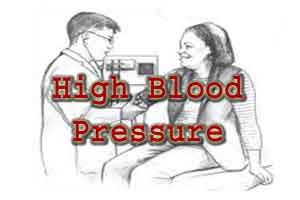- Home
- Editorial
- News
- Practice Guidelines
- Anesthesiology Guidelines
- Cancer Guidelines
- Cardiac Sciences Guidelines
- Critical Care Guidelines
- Dentistry Guidelines
- Dermatology Guidelines
- Diabetes and Endo Guidelines
- Diagnostics Guidelines
- ENT Guidelines
- Featured Practice Guidelines
- Gastroenterology Guidelines
- Geriatrics Guidelines
- Medicine Guidelines
- Nephrology Guidelines
- Neurosciences Guidelines
- Obs and Gynae Guidelines
- Ophthalmology Guidelines
- Orthopaedics Guidelines
- Paediatrics Guidelines
- Psychiatry Guidelines
- Pulmonology Guidelines
- Radiology Guidelines
- Surgery Guidelines
- Urology Guidelines
Noisy workplace linked to high BP and high cholesterol

According to an estimate, there are about 22 million U.S. workers who are exposed to loud noise on the job.It is well known that noisy jobs have long been associated with hearing difficulties.But in the latest study, it has been revealed that louder work conditions might contribute to risk factors for heart disease as well.Noise is thought to increase heart risks by causing stress, which in turn triggers the release of stress hormones like cortisol, and changes in blood vessels and heart rate, the study team notes in the American Journal of Industrial Medicine.
Workers who are exposed to a lot of noise on the job are more likely to develop high blood pressure and elevated cholesterol, a U.S. study suggests.
“A significant percentage of the workers we studied have hearing difficulty, high blood pressure and high cholesterol that could be attributed to noise at work,” said study co-author Elizabeth Masterson of the National Institute for Occupational Safety and Health in Cincinnati, Ohio.
“If noise could be reduced to safer levels in the workplace, more than 5 million cases of hearing difficulty among noise-exposed workers could be prevented,” Masterson added. “This study also provides further evidence of an association between occupational noise exposure and high blood pressure and high cholesterol, and the potential to prevent these conditions if noise is reduced.”
For the study, researchers examined nationally-representative survey data from 22,906 adults who were employed in 2014.
One in four workers reported exposure to occupational noise at some point in the past, and 14 percent had experienced loud work conditions in the previous year.
Industries with the most noise exposure included mining, construction, and manufacturing.
Overall, 12 percent of participants had hearing difficulties, 24 percent had high blood pressure, 28 percent had high cholesterol and 4 percent had experienced a major cardiovascular problem like a heart attack or stroke.
After accounting for participants’ other risk factors, the researchers attributed 58 percent of the cases of hearing difficulty, 14 percent of the instances of high blood pressure and 9 percent of the elevated cholesterol cases to exposure to occupational noise.
Hearing difficulty was linked to all three heart conditions, and it’s possible that both occupational noise exposure and hearing loss might independently influence the risk of heart problems, she added.
The study wasn’t a controlled experiment designed to prove whether or how occupational noise exposure might directly cause risk factors for heart diseases like high blood pressure or elevated cholesterol or lead to heart attacks and strokes.
Another drawback is that researchers lacked data on the intensity or duration of noise exposure, the study team notes.
“The study itself does not establish a cause and effect relationship between noise exposure and the coronary heart disease outcomes,” said John Dement, an occupational health researcher and professor emeritus at Duke University in Durham, North Carolina.
It’s unclear, for example, whether noise exposure might cause high blood pressure or if high blood pressure might be a risk factor for hearing loss with or without occupational noise exposure, Dement, who wasn’t involved in the study, said by email.
“I think it’s premature to draw too many conclusions about implications for patients beyond what we already know about preventing noise exposures and managing cardiovascular disease risk factors,” Dement added.
Still, workers can take steps to reduce noise exposure by using quieter equipment when possible, keeping machinery well maintained and lubricated, and erecting barriers between noise sources and work areas, Masterson advised. Workers can also wear hearing protection in noisy areas, and keep any music at a safe volume.
Routine hearing tests are also key.

Disclaimer: This site is primarily intended for healthcare professionals. Any content/information on this website does not replace the advice of medical and/or health professionals and should not be construed as medical/diagnostic advice/endorsement or prescription. Use of this site is subject to our terms of use, privacy policy, advertisement policy. © 2020 Minerva Medical Treatment Pvt Ltd